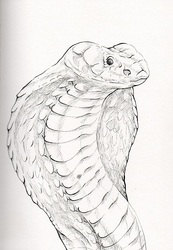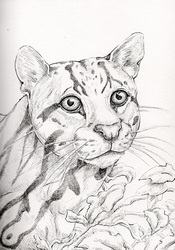Sign In
CloseTotem of the day is Osprey! Observe your options carefully from different angles before choosing a singular goal to swoop into. This time is a fruitful one for diving into your creative talents and turning that artistic energy into whichever form of artistic expression aligns with you. It may be beneficial for you to add fish, sea foods, and organic meals into your diet for added nutrients and gentle balancing of your health. The Osprey spirit guide is known for it's connection to precision, flight, power, majesty, family, protection, and keen vision. This guide often possess a great love for the sun. In Rome, Ospreys were trained to fly towards the sun from a young age and only those who succeeded could continue in training. Osprey aids us in seeing past the brightness to focus on our goals and decisions. Osprey comes as a reminder to cultivate and learn about our own skills to build our resources and complete our goals. Osprey can be a messenger from the divine, being connected with Hermes as a bird of swift flight and communication. Osprey is a hunter who teaches us to aim for our goals without flinching. People who connect with Osprey are greatly protective of their home, family, friends, and even their work. They are known for their stance as a guardian of their family, which is their highest priority. Often taking great care to watch over children and build sturdy, safe homes for their family to live in. These individuals enjoy building their homes in elevated places that allow them to observe their surroundings easily.
Ospreys, Pandion haliaetus, are carnivorous hawks that can live up to 15 to 20 years in the wild. Although quite large, an Osprey's body is rather slender with long legs and long, narrow wings. They can be identified from below while flying due to the unique M shaped their wings create when flying. An adult Osprey can reach over 22 inches in length, possess a wing span of over 70 inches, and grow to a weight of just over 4 lbs. In comparison to other raptors, the Osprey is larger and with longer wings than the Red-tailed Hawk, but is smaller than the Bald Eagle. The color of an Osprey is generally brown on top with a white bottom and a distinctive white head with a wide brown stripe through the eye. The underside of their wings are primarily white with dark patches at their wrist. They posses the most white color out of most raptors. Found on all continents except for Antarctica, Ospreys can adapt to a wide range of habitats as long as they are near a body of water. Ospreys are also known as river hawks, fish hawks, and sea hawks for good reason. Unlike other hawks. Ospreys feed nearly exclusively on fish. Although, on occasion, they will dine on rodents, amphibians, other birds, and small reptiles. An Osprey is adapted perfectly to hunting fish with excellent eyesight that allows them to spot fish beneath the water and prevents them from being blinded by the sun bouncing off the waters. They are able to dive over three feet below the water, but will prefer shallow areas in which to fish. It has been observed that they prefer hunting for fish between 6 and 13 inches with a weigh of under a pound. While they have been seen drinking water on hot days, Ospreys get most of the water they need from their prey. They are excellent hunters with a success rate of 70%. Another unique trait to Ospreys not possessed by other hawks would be the reversible outer toe that allows them to grasp with two toes in front and two behind. Barbed pads on their feet aid in grasping slippery fish and they will even align the fish with the wind when flying for less wind resistance. Solitary birds, they will keep to open areas and roost alone. In winter, they may flock in groups of 6 to 10 to roost together for warmth. Ospreys are less maneuverable than other hawks, but adept at diving and soaring. Rather than defending a larger territory, they will prefer to defend just around their nests. Ospreys are migratory hawks that can travel over 160,000 miles in their lifetime. When breeding occurs, the male will perform an elaborate courtship called a 'fish-flight' or 'sky-dance' in which he clasped either fish or nesting materials and begins hovering above the nest making slow, shallow swoops for up to 10 minutes or more. During this, he will repeat screaming calls while descending slowly down to the nest. These courted pairs will mate for life. An Osprey's nest is located near an open area for easy approach and a wide view of whats around them. Nests are created out of sticks with a lining of bark, grasses, algae, flotsam, and sod. The male will bring the materials while the female builds the actual nest. Nests are added to every year. Starting around 2 feet in diameter and 3 to 6 inches deep in it's first season, a nest can grow up to 13 feet deep and 6 feet in diameter. A single nest can be used for up to 70 years. A female Osprey will lay up to 4 eggs which will hatch at different times. The first chick born will often dominate the younger chicks. In abundant times, all the chicks will share food, but may fight or starve in times of less food. The chicks are born with a soft down and open eyes. They will fledge in 8 to 10 days.
Submission Information
- Views:
- 383
- Comments:
- 0
- Favorites:
- 1
- Rating:
- General
- Category:
- Visual / Traditional




